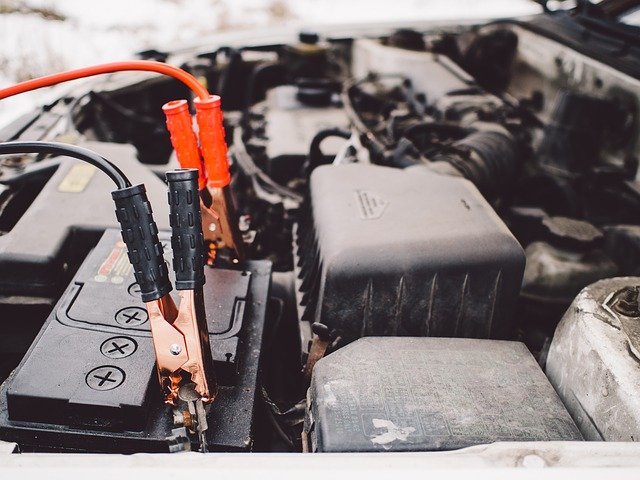How to repair a car battery cell
Matilda Douglas-Henry
It’s commonly known that without a functioning battery, your car won’t start; but what about the individual components of a battery, and how to repair or replace them? Here we will discuss car battery cells and what to do when they stop working, including:
- What a car battery cell is, and where it is located
- Signs a car battery cell needs to be repaired
- How to repair a car battery cell
- Cost of car battery cell repairs

What is a car battery cell, and where can I find it?
Most modern vehicles
use lead-acid batteries that
transform chemical energy into electricity. This process wouldn’t be possible
without battery cells, which
conserve the energy until it is ready to use. Some makes and models are
different, but your car battery is almost always located under the bonnet in
one of the far corners.
Typically, a car battery consists of six cells that sit alongside each other in a row in a plastic casing; within each cell there is a lead dioxide plate and a lead plate. These plates create two volts, which is why most car batteries are referred to as 12-volt batteries. The cells are steeped in sulfuric acid, which is how the chemical reaction between the two plates occurs[1].
All cells need to work for the battery to produce the required 12 volts that keep the vehicle running smoothly.
What are the signs of a failing battery cell?
Cell failure is one
of the most common ways a battery can give out. Aging and overheating in
particular can lead to cell exhaustion[2].
Some of the most common signs of a bad battery are:
-
Certain electrical components are unable to activate to their full power
(i.e. dashboard or headlights);
-
A clicking sound when you turn the key in your ignition;
-
A slow crank;
-
Car backfiring[3].
Other general issues can occur from a dirty battery unit that leads to rust and corrosion. During your regular services, ensure that your battery is being cleaned.
How to repair a car battery cell
To repair a car
battery cell, you must restore the chemical balance that is required to
generate a reaction and create energy that kicks your vehicle into gear. While
there are many internal car operations that should be serviced by a mechanic
only, you can easily check the status of a car battery cell on your own and
remedy it if it’s an easy fix, although you must have the right tools. For this
type of work, you will need:
-
A voltmeter;
-
Top-up battery water;
-
A large screwdriver;
-
A torch;
-
Battery acid and battery hydrometer (from your local mechanic, if the battery water
isn’t sufficient);
-
Protective gear such as goggles and acid-resistant gloves[4].
Here are the steps to repairing a car battery cell. If you aren’t confident to do this yourself, a mechanic will have all the equipment on hand to do it for you.
Test the battery with a digital voltmeter[5].
A voltmeter is the most reliable way to determine whether or not your battery is dying; in this case all you’ll need is a standard voltmeter and an analogue gauge. Attach the positive end of the voltmeter to the positive battery lead, and do the same for the negative sides. If the voltmeter shows no reading at all—or a reading of less than 12.4 volts—the battery is dying[6].
Clean the battery.
Using a dry cloth, remove all loose dirt and oil from the top of the battery. Be particularly diligent around the vent caps area (the vent caps seal the cells). Unscrew all the cell vent caps with the screwdriver, and put them in a safe place.
Use the torch to check the electrolyte fluid levels of each cell.
Here you will be able to determine which cells are weak. The fluid should be about 6.5mm above the lead plate. Top up whichever cells need more fluid with battery water and refit the vent caps. Check the battery function again after 12 hours.
If the battery is still not working, ensure you are in a well-ventilated area.
The next step
involves corrosive and poisonous materials. You must be in an open,
well-ventilated space, and be wearing the correct protective items.
Check each cell’s specific gravity of the electrolyte with the battery hydrometer, adding battery acid to any cell that doesn’t meet the required levels. A fully charged battery should have a specific gravity of 1.265, and no cell should have a difference of more than 0.05. Following these regulations, add battery acid to any cell that requires it[7].
Recharge the battery and test. If there is still no response, the battery cells have been damaged by sulfation and require replacement. A mechanic can advise whether they can repair the battery, or if you need a new one[8].
How much does it cost to repair a car battery cell?
It’s completely
understandable if replacing a car battery cell yourself feels too daunting and
you would rather visit a mechanic; indeed, in many cases, battery failures
require the attention of a qualified professional.
On average, car battery replacement in Australia costs between $150 to $350[9]. Some inspections can cost as little as $80, and the size, age, and quality of your vehicle will significantly impact the price point[10].
Conclusion
If your vehicle is
showing signs of battery troubles, act now! A weak battery is one thing; a flat
one is a whole other ordeal. Use DingGo’s quick quotes
service today for fast and reliable service.
[1]
https://www.continentalbattery.com/news/how-does-a-car-battery-work
[2]
https://www.sydneybattery.com.au/8-common-reasons-why-car-batteries-fail/
[3]
https://www.tiresplus.com/blog/batteries/unmistakable-signs-car-battery-is-failing/#
[4] http://www.365daysofmotoring.com/blog/motoring/fix-dead-cell-car-battery/
[5]
https://itstillruns.com/symptoms-dead-cell-car-battery-7362764.html
[6]
https://www.batterystuff.com/blog/how-to-tell-if-your-battery-is-bad.html
[7]
https://sciencing.com/homemade-edison-cell-5993981.html
[8]
https://caralso.com/how-to-fix-a-dead-cell-in-a-car-battery/
[9] https://www.oneflare.com.au/costs/car-battery
[10] https://www.autoguru.com.au/car-advice/repair-tasks/battery-inspection-and-replacement
